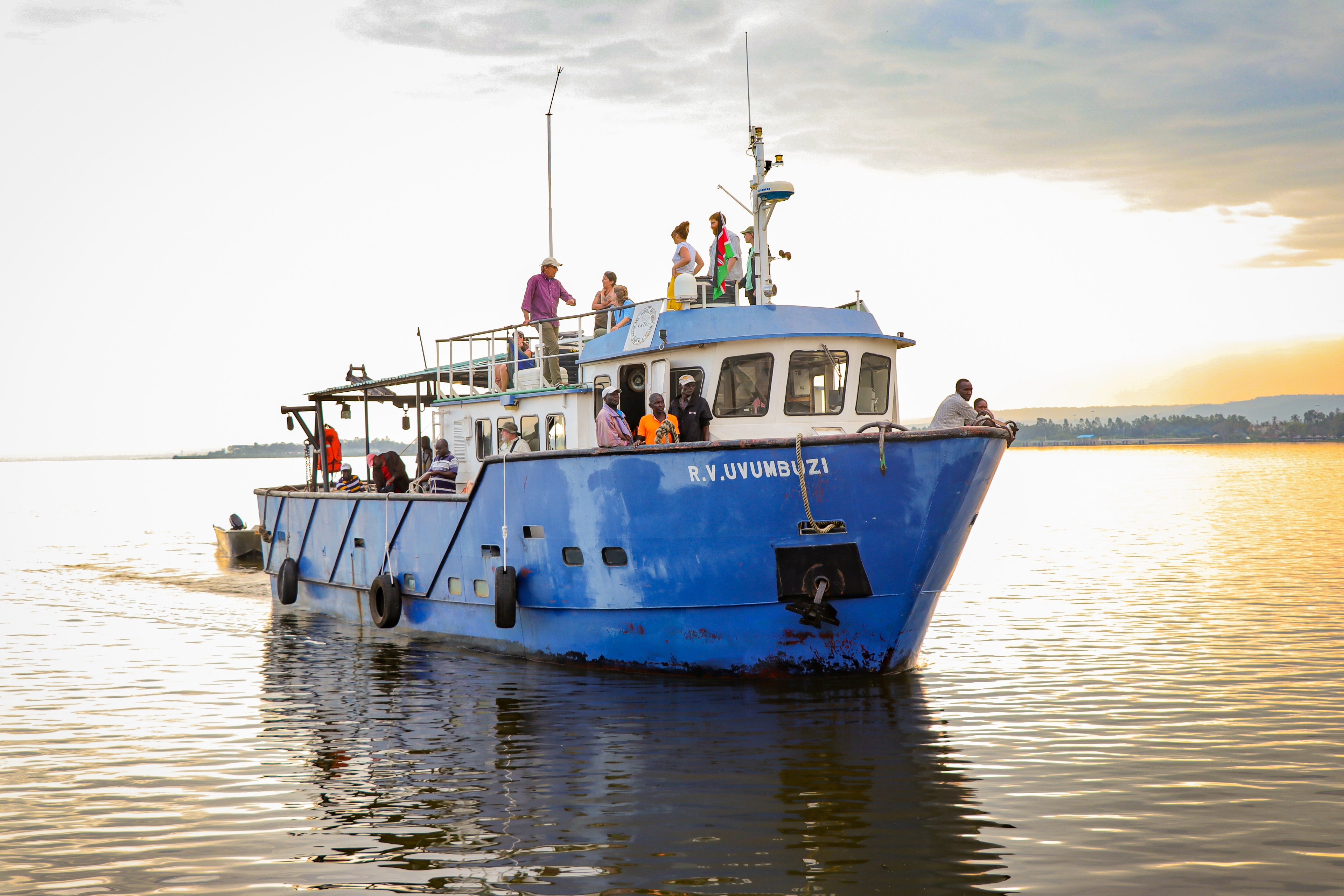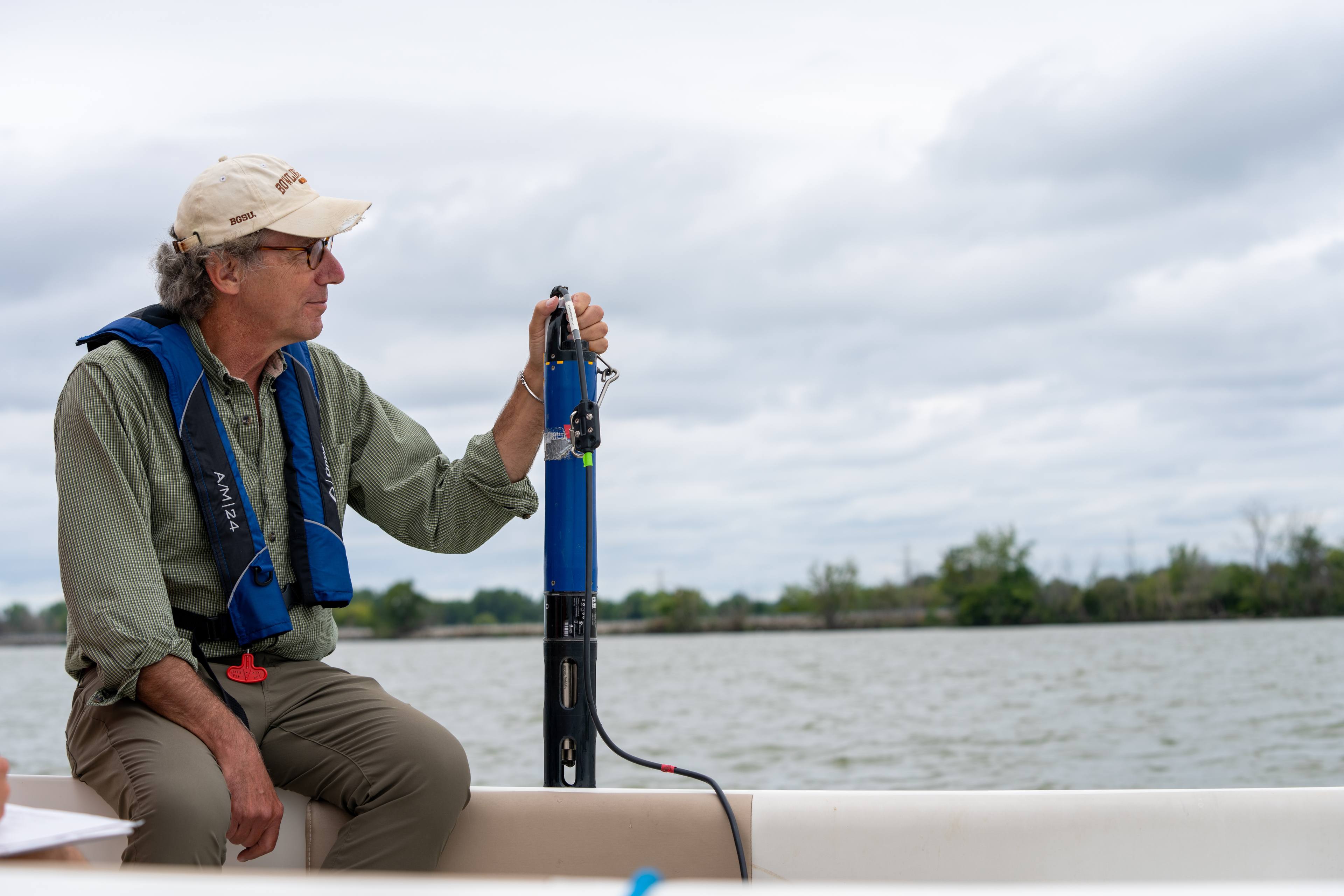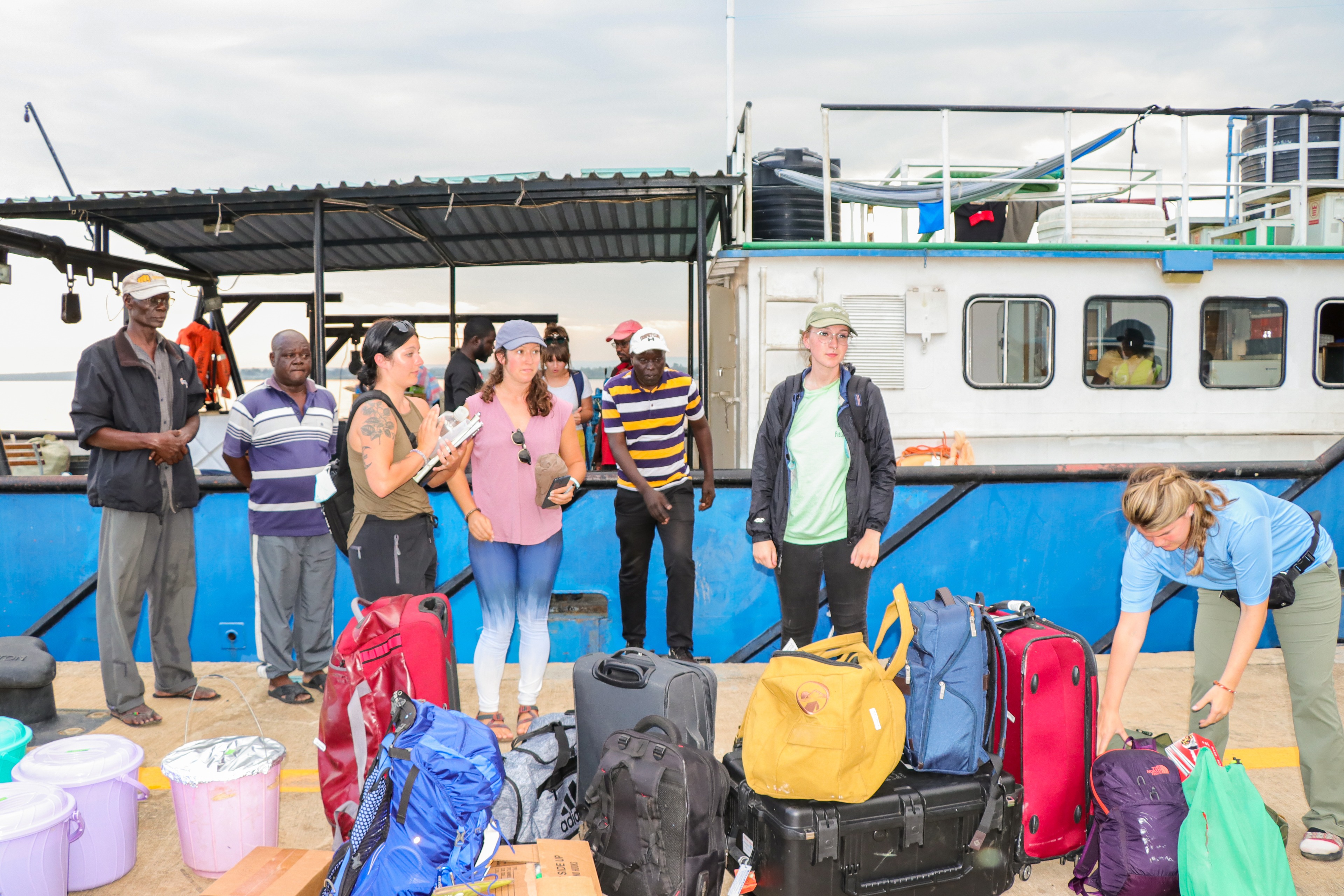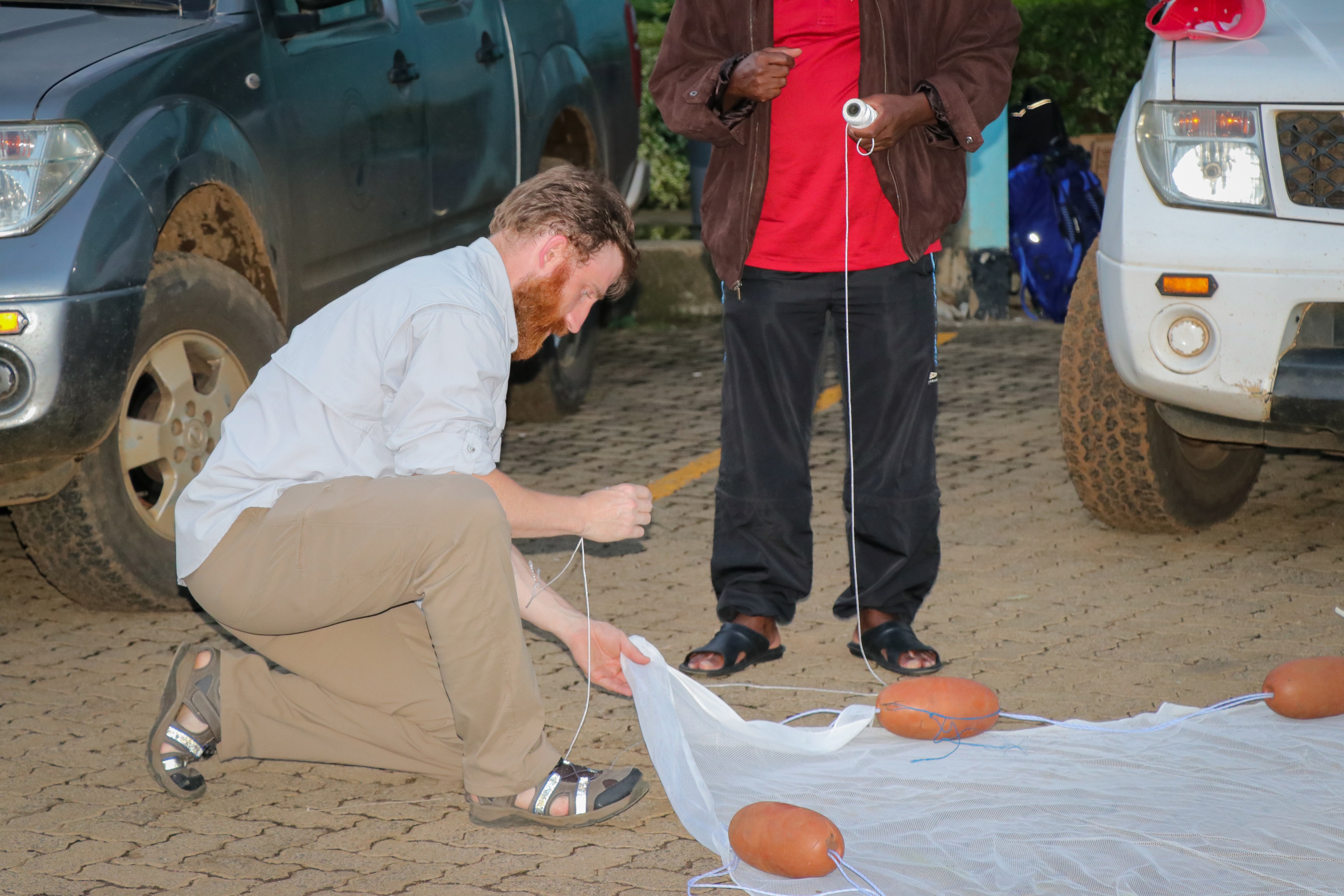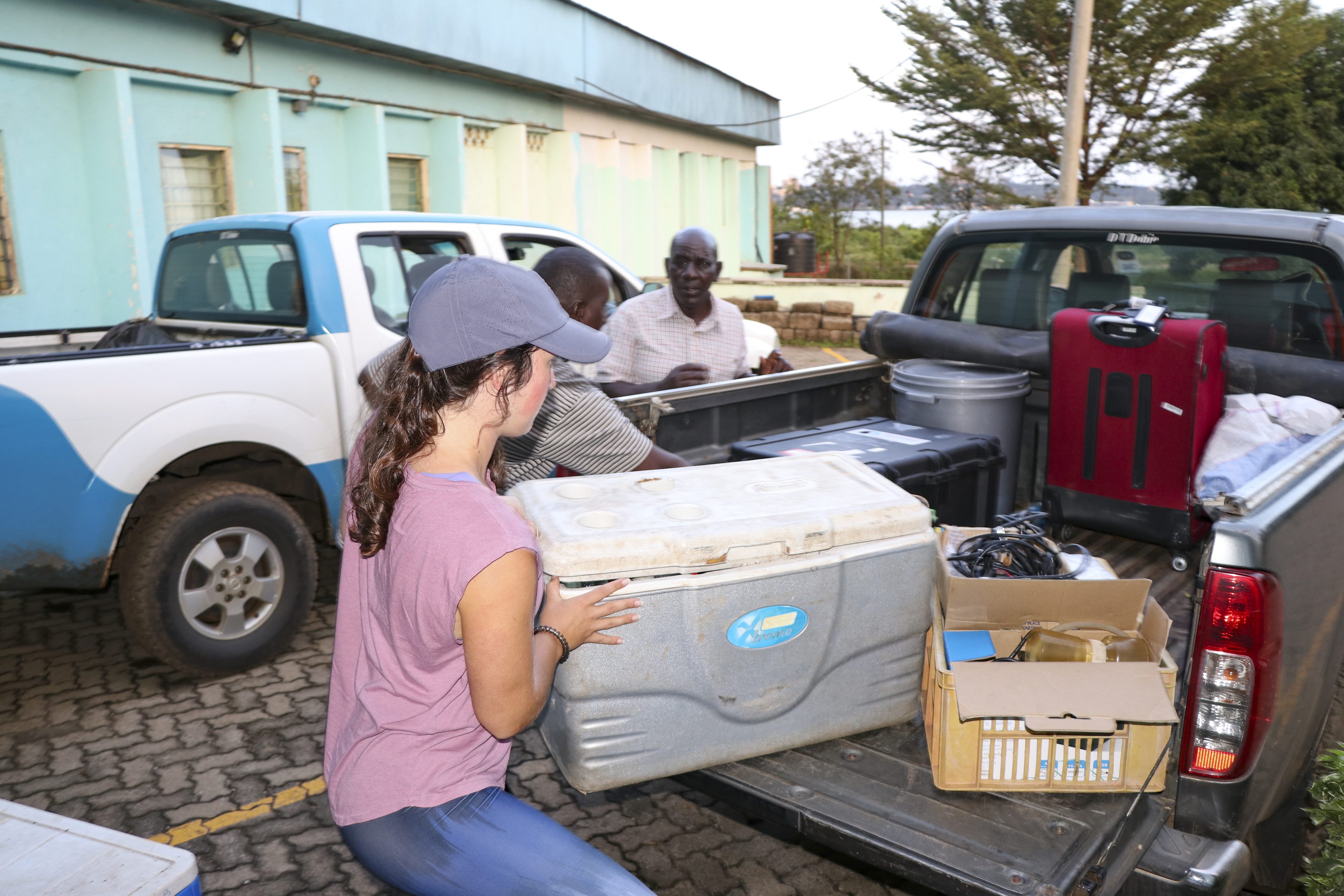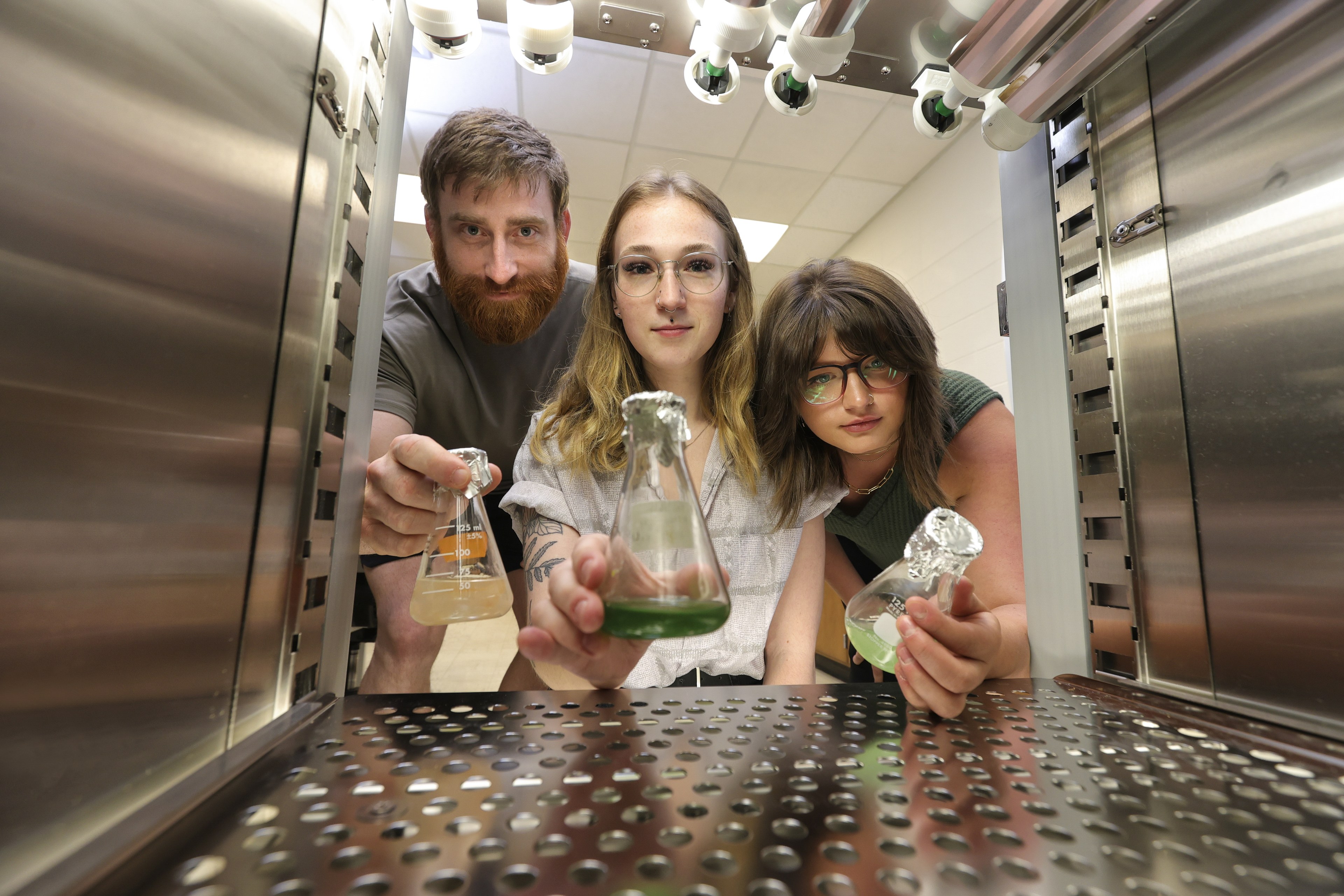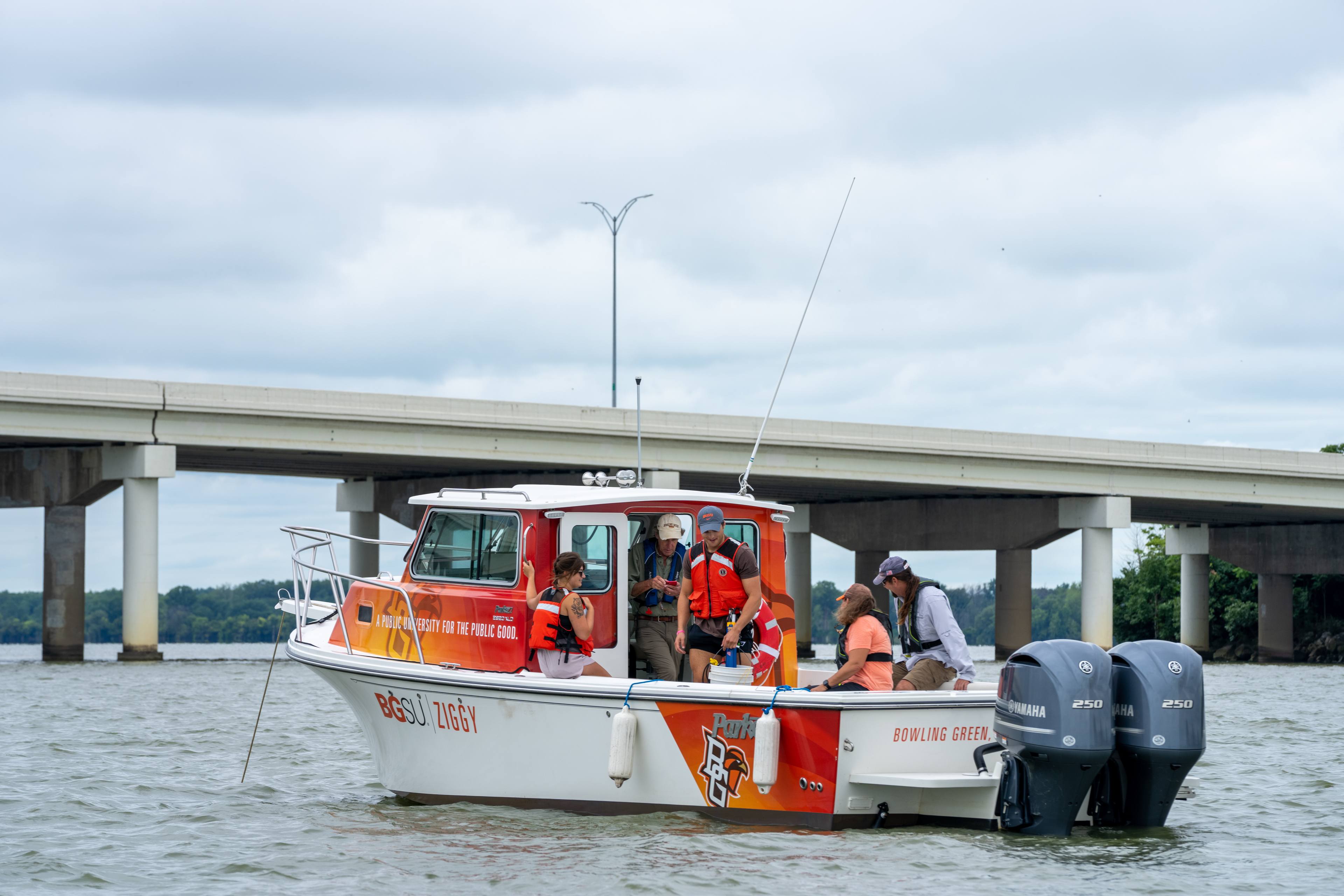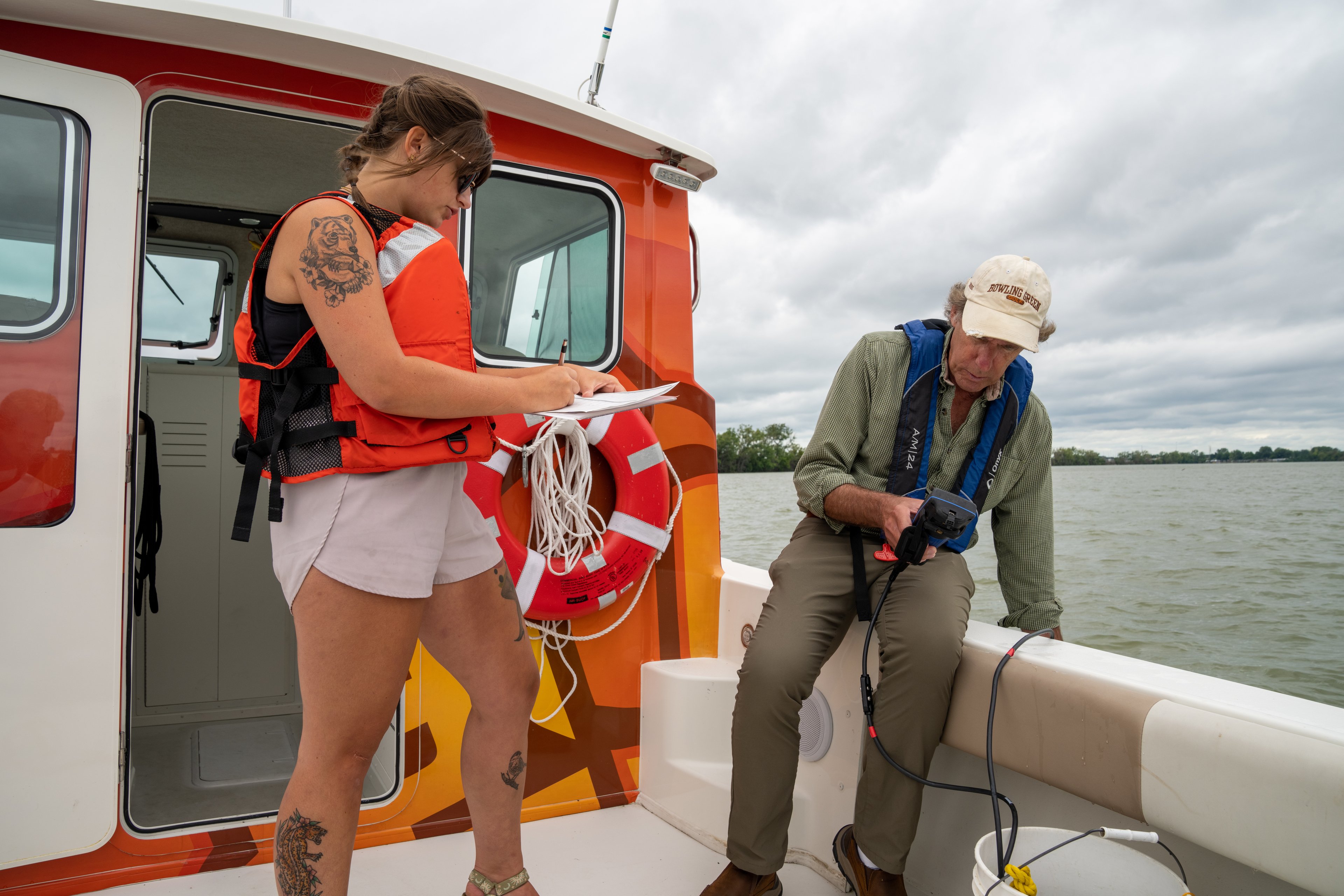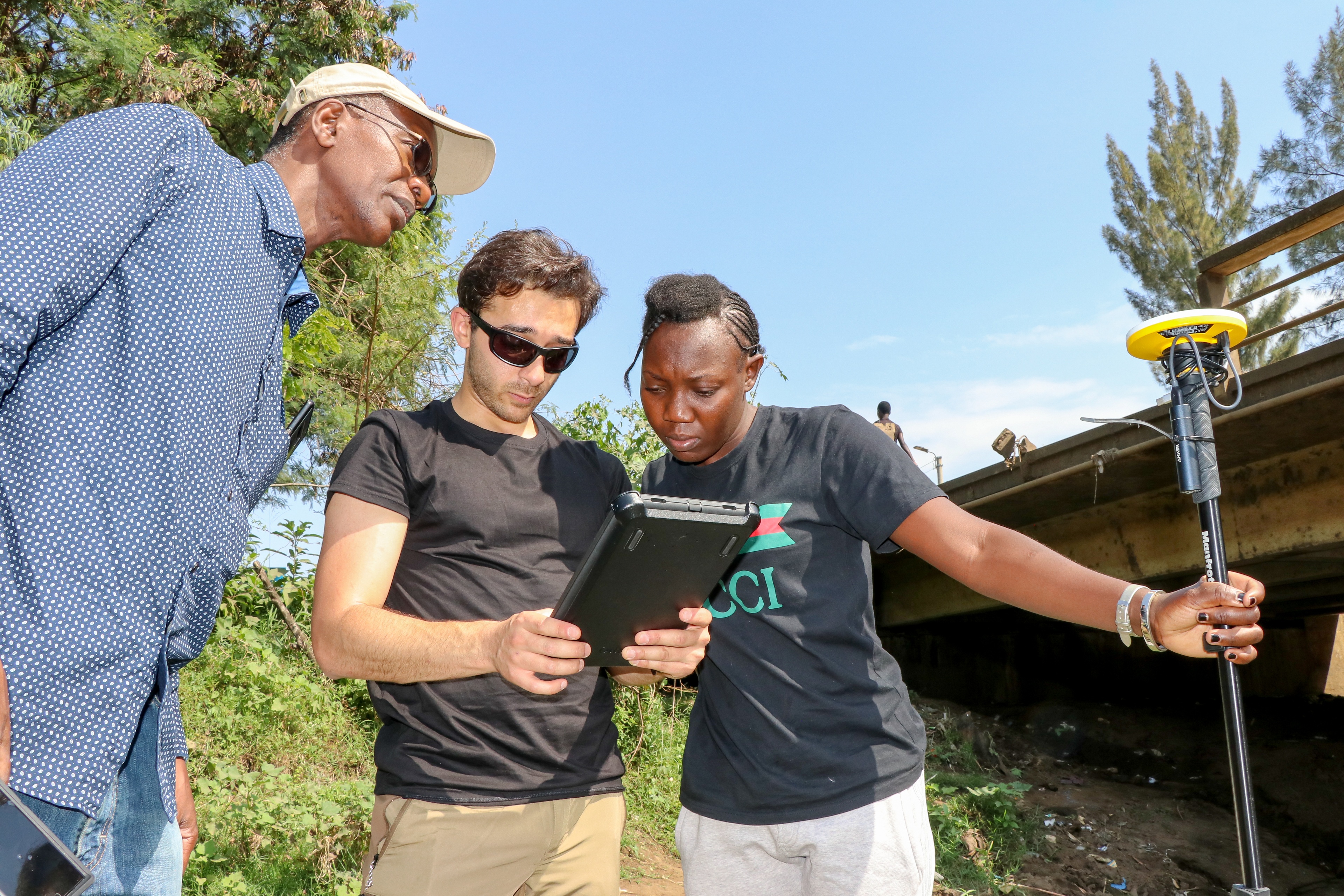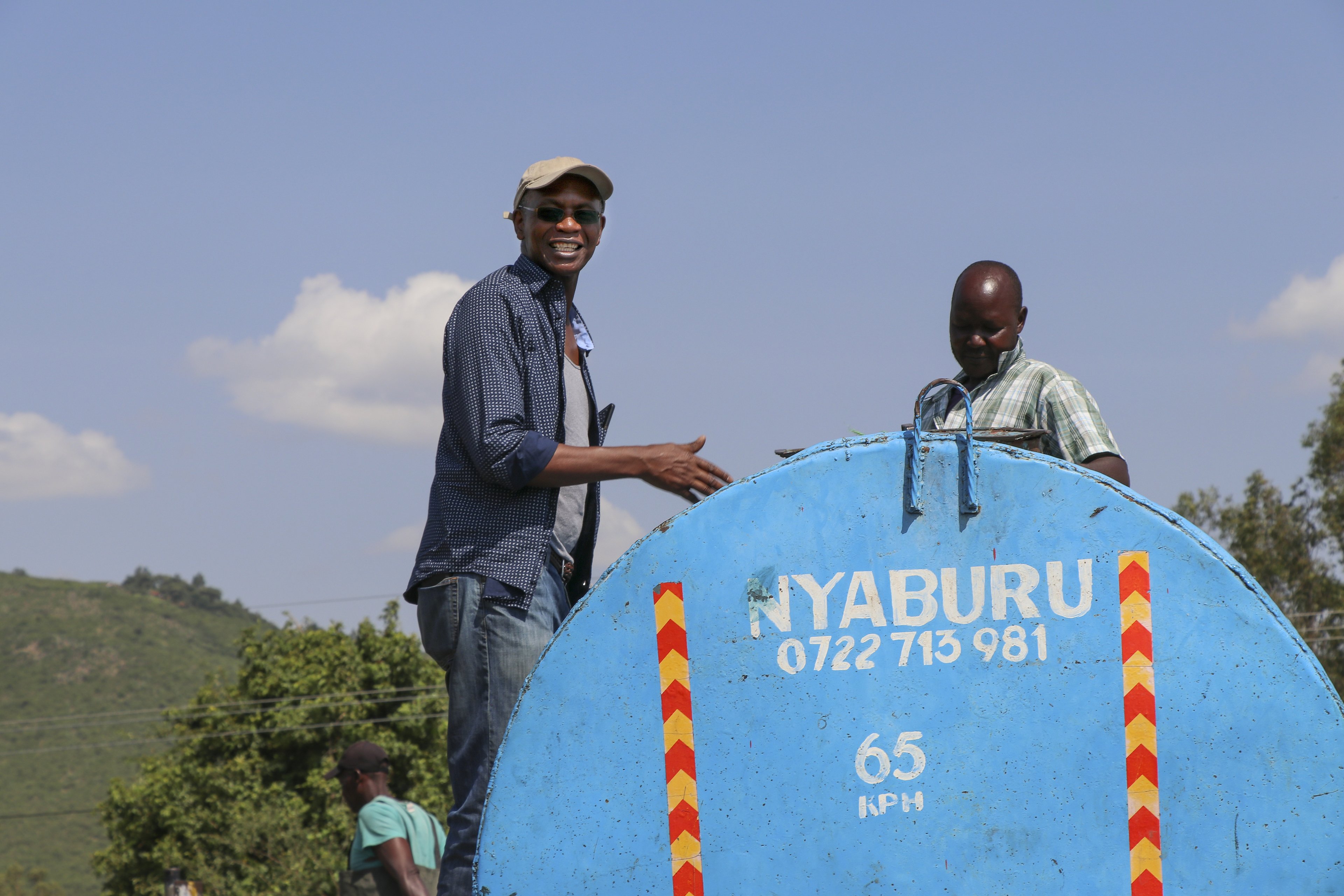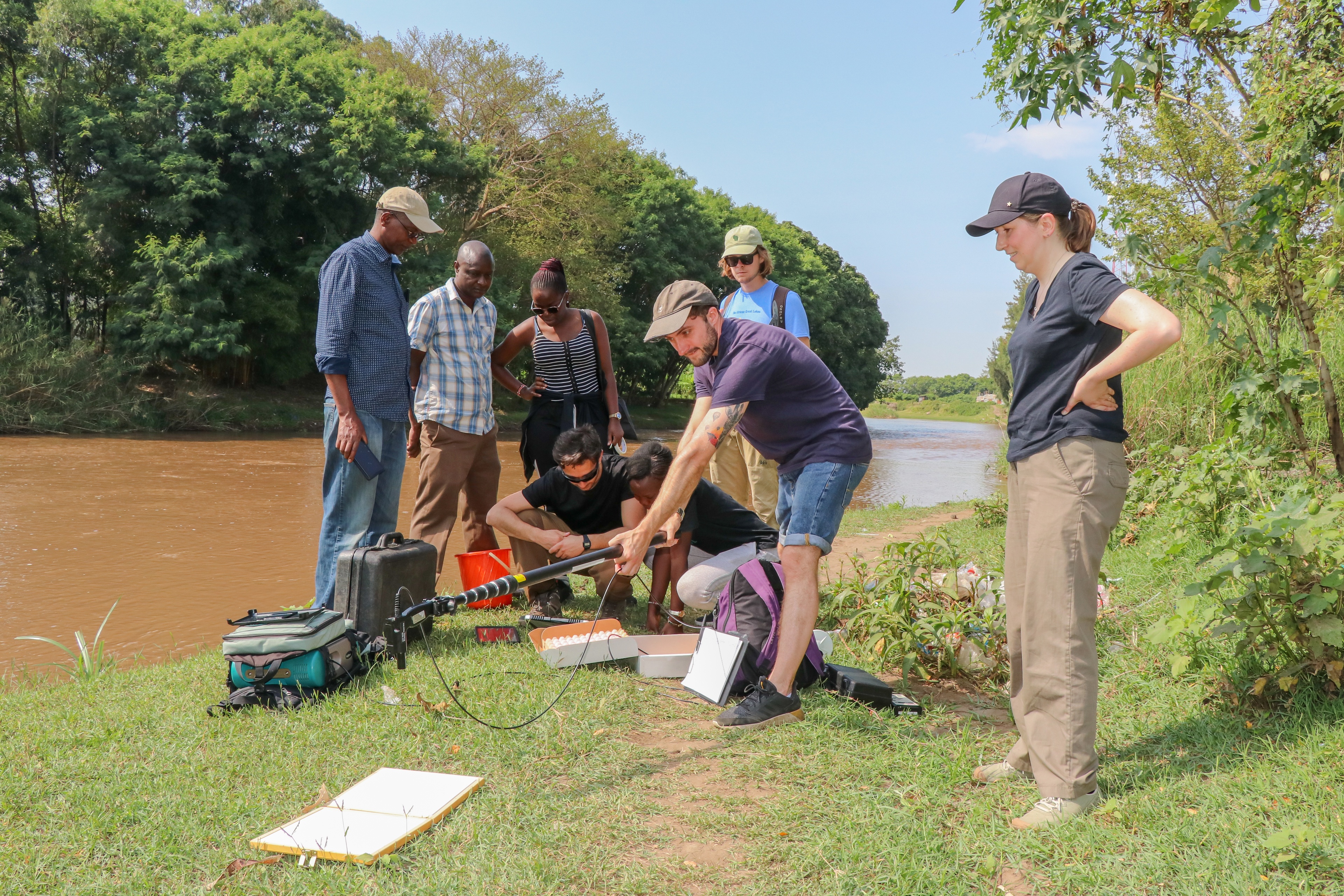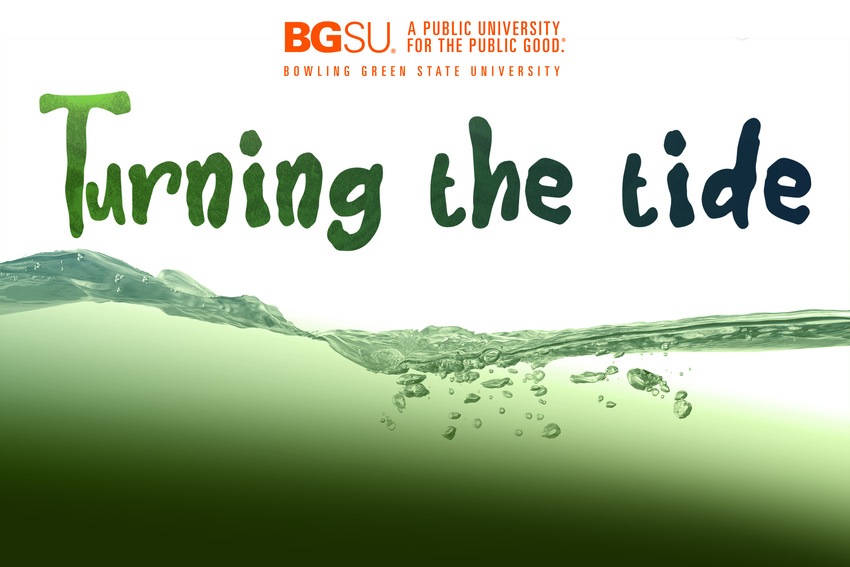Research & Innovation

Turning the Tide
BGSU researchers work to unlock genetic secrets of algal blooms in Africa
Story by: Victoria Dugger and Nick Piotrowicz | Design by: Robb Nardecchia | Photos and video by: Craig J. Bell, Justin Camuso-Stall, Edgar Marumbu and Steve Kioko (Kenyan contributors)
From the shores of Lake Erie to Kenya's Lake Victoria, Bowling Green State University professors and students pursue the causes of toxic algal blooms and what could be done to halt them.
RegardlessRegardless of the location on the globe – be it in northwest Ohio or a world away in Kenya - a basic truth can be distilled into a single drop: Water is life. The two vastly different regions contain two bodies of water with surprisingly similar issues and a research team from Bowling Green State University is working to uncover why both Lake Erie and Lake Victoria are plagued with algal blooms, why some algal blooms may be genetically predisposed to be toxic and what might be done to turn off those genes and improve the water quality.
Dr. George Bullerjahn, an emeritus professor of Biological Sciences at BGSU and the director of the Great Lakes Center for Fresh Waters and Human Health, and Mike McKay, a BGSU research professor and the executive director of the Great Lakes Institute for Environmental Research at the University of Windsor, are assessing the data from their summer research trip to Kisumu, Kenya, with a cohort of BGSU graduate students. Working with McKay and Bullerjahn is Dr. Kefa Otiso, professor of geography at BGSU, a native of Kenya who handled the logistics and student orientation for the trip.
The team received a National Science Foundation grant of nearly $400,000 for Bullerjahn and Otiso to travel across the world for a comparative study they believe can contribute to the understanding of toxic algal blooms.
“I think we all need to have access to clean water for drinking and recreation, and also for the well-being of livestock and pets,” Bullerjahn said. “We’d like to be able to predict when these blooms will happen and the conditions under which we can prevent them from happening.
“Ultimately, we will wind up with a healthier environment with less nutrients in the water, with less cyanobacteria, less algae overall. The whole goal is to have better water quality so that drinking water and recreation is protected and also fisheries and livestock and pets are protected.”
BGSU researchers collaborated on the trip with Kenyan researchers from the Kenya Marine and Fisheries Research Institute (KMFRI) and Kisii University, as well as representatives from the University of Wisconsin, University of Tennessee, University of Minnesota-Duluth, James Madison University, University of Windsor and Kent State University.
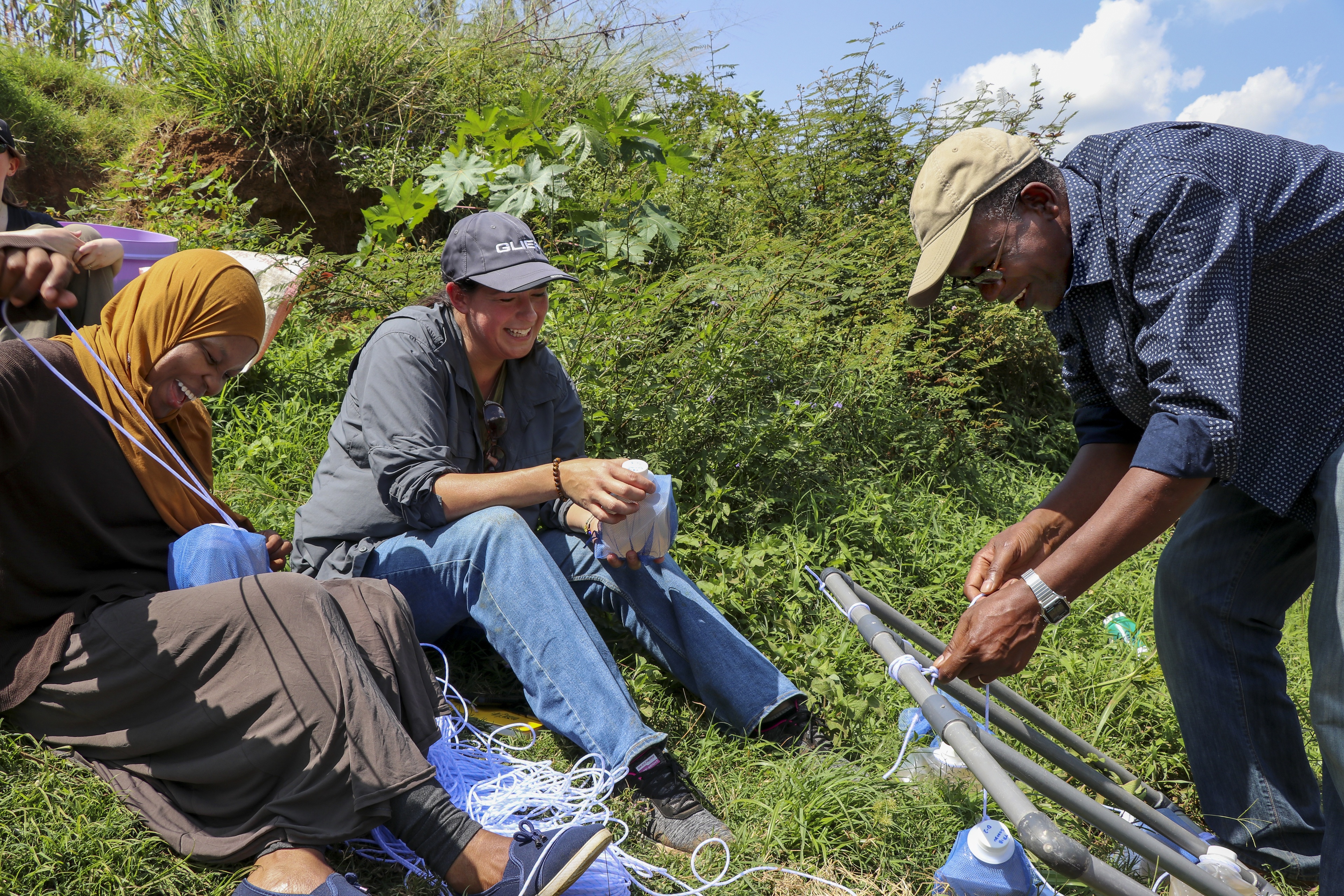
A tale of two lakes
Lake Victoria and Lake Erie both experience the same type of cyanobacteria growth and the BGSU team is examining how different the bacteria strains are in the lakes. Samples taken from the Kenya trip are being genomically sequenced in a process that will take several months to complete.
“We have a ton of samples and it's taking a year to do all the DNA sequencing. The whole idea is to look at this population in Lake Victoria and see how similar it is to that which we find in Lake Erie. And by comparing genome sequences and other things that we can measure, we want to identify if there is anything special and unusual about these bloom communities that might make them adapt to a tropical environment where it doesn't freeze,” Bullerjahn said.
“Here in Lake Erie, you have to have presumably some adaptations to live in a lake that freezes. Here in Kenya, every day is 12 hours of daylight, it never freezes and the temperature is the same.”
Despite the climate differences, there are similarities between the two lakes that might help explain why blooms are prone to form, Bullerjahn said. The region of Lake Victoria that the BGSU research team explored is a section in the northeasternmost portion of the lake. Bullerjahn said the embayment is shallow – like Lake Erie – and also gets very little water flow, which makes it a prime environment for harmful cyanobacteria to grow.
Research that impacts the public good
While in Kenya, the researchers also identified evidence of a new cyanobacterial toxin in a region of the lake where it had not been previously documented, which was near a water intake.
“We surveyed everything in the lake using this assay that looks for genes that are responsible for making different kinds of toxins. We’re looking at the genetic capability of the cyanobacteria in the water to make these nasty compounds,” Bullerjahn said. “Tucked up in one area, we found a massive amount of genes that encode for this other toxin, called cylindrospermopsin. It’s produced by a different cyanobacterium and no one had ever documented the extent to which cylindrospermopsin was made in the lake.
“This is important because there are water intakes here and people don’t know to look for this toxin, so this is a new event. This is one of the first things that came out of our samples that we found – evidence for a different cyanobacterial toxin in a place where it had not been documented to occur.”
This information is good for the local Western Kenyan residents to know, Bullerjahn said, because this allows them to adjust their water treatment regimen to remove that type of toxin.
“Removing the toxin is actually pretty straightforward – if they know it’s there. It’s something they need to know, and we will alert people to look for this other toxin in the eastern part of the Winam Gulf of Lake Victoria,” he said.
“That's just an example of the sorts of things that we do and one of the first important things that just came out of the work that we’re doing. In looking at all these samples, that's one thing that (BGSU graduate student) Kate Brown in our lab did as a first step, and there’s a lot more she's working on.”
BGSU graduate students making a difference
Three graduate students from BGSU – Brown, Katie Barker and Ryan Wagner – conducted self-driven research projects during the three-week visit to Kenya. Barker, Brown and Wagner all chose BGSU to pursue postgraduate degrees because of the school’s faculty research expertise on the topic, which has been an issue of significant public interest since a 2014 toxic algal bloom temporarily made water from the western Lake Erie basin undrinkable.
Barker is testing different portable technologies that identify cyanobacterial toxins in the field, which provides researchers with quick, reliable data that does not require transportation to a lab. Right now, Bullerjahn said, there is nothing in the field that gives a quantitative measurement answer right away.
“The typical ways we measure these toxic substances are using tests that have to be done back in the lab that take several hours to do. They're not hard to do, but they take time,” Bullerjahn said. “You just can't go out in the field and say, ‘OK, let's let's grab a parcel of water and then let the people know in an hour.’ Katie field tested a toxin detection device and documented the presence of microcystin where we were expecting to see it, showing that the technology works.”
“I normally look at Sandusky Bay, Lake Erie and then some smaller surrounding lakes that have bloom issues, so I’m essentially transferring what I do to Lake Victoria,” Barker said.
Additionally, Brown and Barker are compiling a large dataset that will track nutrient, toxin, chlorophyll and genomic data that aims to provide a more comprehensive view of the entire bacterial community, which then could serve as a launching point for future researchers who would not have re-collect massive amounts of data.
“It’s nice when you have a bigger picture,” Barker said. “When you can go into it saying, ‘We know this toxin is here or this species is here, and these are the environmental conditions,’ you can start to paint a bigger picture of what might cause different conditions, whether they be toxic or not.”
Wagner’s research area focuses on fungal parasites and viruses, and their effects on toxin production in water. In addition to the research he conducted in Kenya, Wagner served as a technician on the trip, helping other team members with their projects and processing the water on Lake Victoria.
“These are samples that will take a long time to analyze, but what Ryan’s looking at are factors that would kill off these bloom events. There are viruses that would kill the bloom and there are fungi that feed on the bloom. Both of those pathogens can kill off the bloom,” Bullerjahn said. “Through Ryan’s work, we know a lot about viruses that destroy cyanobacteria in Lake Erie and fungi that do the same thing. The question is, are they similar to viruses and fungi that we would find in Lake Victoria?”
Work on those water samples – to purify and detect viral DNA - requires a lot of time and that’s part of what Wagner is continuing to research.
“From bloom dynamics, Lake Erie and Lake Victoria are very similar,” Wagner said. “They have very similar communities despite being in fairly different climates, so we’re looking at both climates to see what differences and similarities there are, and also working with other groups on the science of blooms."
Brown is continuing to study DNA and RNA data to explore how bacterial communities function, which could give researchers a better understanding of when toxins are likely to be made.
“With the genomic data, I’m also going to look at the DNA composition of the community, so I’m going to be looking for toxin-related genes that signal toxins could be made at any point, even if they’re not there at the moment,” Brown said. “When we do a lot of this sequencing, we’re going to come up with bacteria other than cyanobacteria, and we can look into how the community functions as a whole.”
Like Barker, Brown is also researching methods of detection of cyanobacteria. She is developing portable, easy-to-use infield technology that can do semi-quantitative counts of common types of cyanobacteria.
Continuing the commitment to water quality
Once the genotyping data from the Lake Victoria samples are returned, the researchers will be able to look at what drives the bloom to become toxic.
A typical green algae bloom may look like one big organism, but it’s really not, Bullerjahn said. It’s really a mixture of closely related cyanobacteria, and some have the genes that could lead to toxicity and some don’t.
“One of the really mysterious things about these events is that you can look at water and it’s amazingly green – and it may not be that toxic. And you can have a bloom in which the water is lightly green, and it might be quite nasty,” Bullerjahn said. “So a lot of this genotyping is going to tell us the extent to which the bloom has genes for these toxins and whether those genes are active or not.”
The BGSU researchers are also investigating what might trigger the genes to produce toxins and once that’s learned, how to turn the trigger off.
“The traditional thinking is that if you have the toxin, genes are always sort of on and they're always sort of directing the cell to make toxins. And now we know that’s not true,” Bullerjahn said.
Plans are in place for a return to Kenya next May with a new cohort of students to continue the comparative research with the aim of protecting precious freshwater sources.
“Water research is a good thing to be working on – it’s something the public cares about. It’s not just a one-sided issue. Improving water quality is something I think people generally care about,” Bullerjahn said.
“People of all stripes are getting a better understanding of how important water is and what makes good water go bad. And there’s a need to do something about that when it does do that.”
Updated: 11/04/2022 02:45PM


